November 23, 2016
List of Blogs
|<
<
>
>|
Tags
Pollinators
Starting Seeds
|
|
Fall Beauty and Spring Plans
|
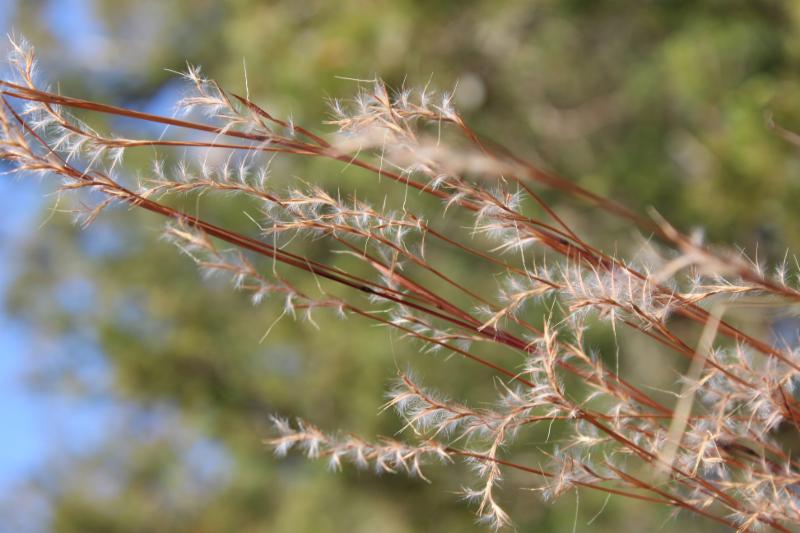
Little Bluestem Grass (Schizachyrium scoparium) going to seed
|
|
Well, the weather has finally changed, and here at Toadshade we've broken out our warm coats to finish settling our
plants in for the winter. But gardening is hardly over for the season! We're still shipping out plants to our
southern friends until the end of November, and although the trees have lost their leaves here, there's still
beauty everywhere we look, and so much that can still be done to prepare our gardens for next spring!
|
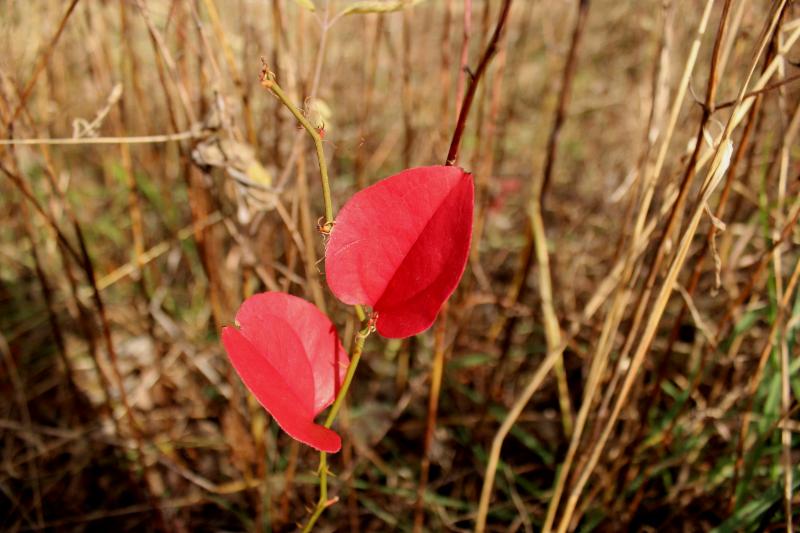
Roundleaf Catbriar (Smilax rotundifolia) turns beautiful colors in the fall
|
|
Why do you plant wildflower seeds in the fall?
We've spoken about this before, but it's worth revisiting. Nearly all wildflower seeds require a period of damp cold
(winter) conditions before they'll grow: this is the "cold stratification" we always talk about. It's an evolutionary
adaptation to keep them from starting to sprout in, well, November! Most wildflowers need to sprout in the spring so
they have an entire season to grow and build up energy reserves in order to survive the next winter (it's important
for perennial plants to prepare for this!). Many of these seeds simply won't grow until they've been cold and damp
for a certain period of time. The upshot of this is that fall is actually the perfect time to plant wildflower seeds
directly outdoors! We generally advise people to plant shortly before a snowfall or rain to help the seeds settle in.
Make sure you don't plant them too deep though (a VERY common mistake)! Remember this rule of thumb: In general, seeds
should be planted no deeper than the thickness of the seed itself!
|
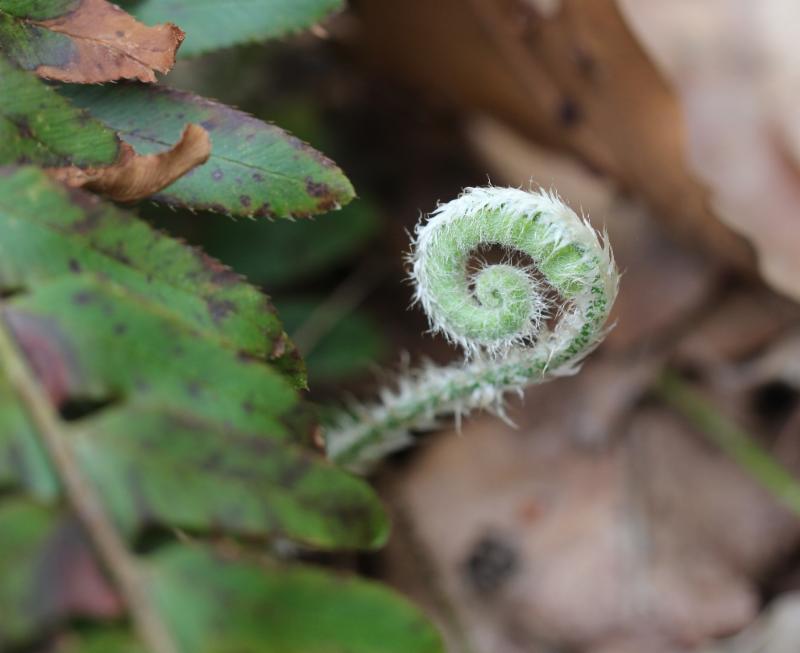
A Christmas Fern (Polystichum acrostichoides) fiddlehead
|
|
What else should I be doing to prepare for spring?
If you spent your summer creating a garden of native plants, you've been encouraging native insect life like
butterflies and moths, and a whole ecosystem of beneficial little creatures. Most of these overwinter in leaf
duff, so don't get too carried away clearing leaves out of your garden!! The more leaves you allow to stay,
the more your wildlife garden will thrive, and the more effective it'll be! This is the time of year when the
creatures you've been supporting with your garden need the most help, and the leaf duff helps insulate the soil
to keep your plants' roots snug and cozy during the cold of winter so that they can re-sprout right on time for spring!
|
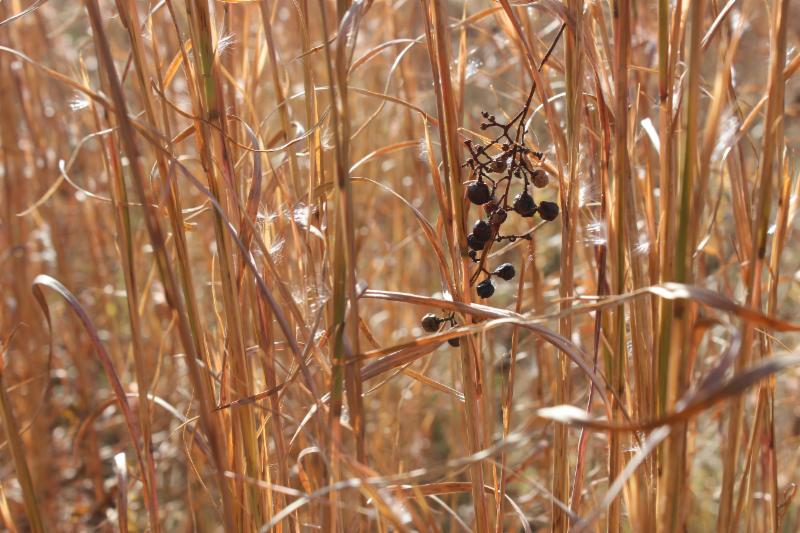
A cluster of Summer Grape (Vitis aestevalis)
caught in a stand of Broom Sedge (Andropogon virginicus)
|
|
Why would I want to be gardening right now? It's cold out!
Well, yes, it is cold out - and it's only going to get colder! If you find yourself dreading the months of
cold weather, one of the best ways to combat that is by preparing for spring. There are always little things
to do to remind yourself that spring will eventually come: planting seeds to look forward to seeing the flowers,
making sure your gardens are ready to welcome new sprouts, researching what butterflies you might see next summer,
or just going out and enjoying the strange beauty of late fall. After all, there are always beautiful things to
be found in nature, no matter the season.
|
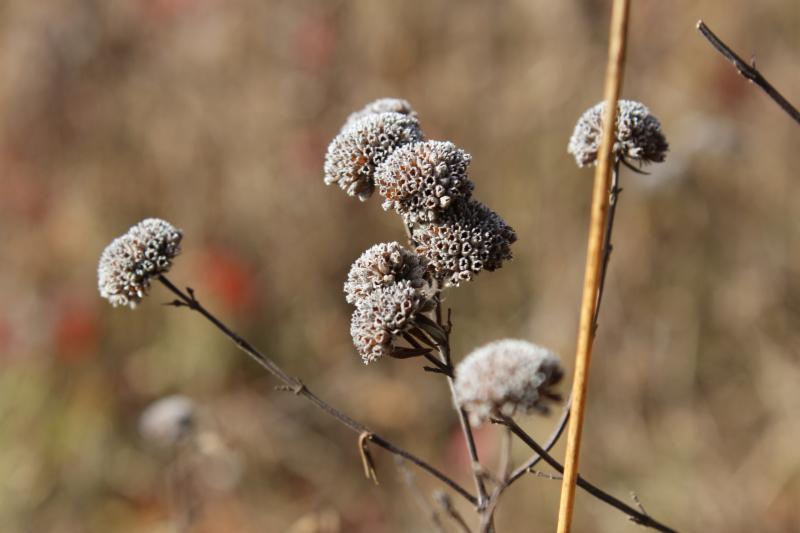
Whorled Mountain Mint (Pycnanthemum verticillatum) seedheads in late fall
|
|
Insects and creatures are still out and about
It is nearly the end of November and on warm days we continue to see some pollinators visiting our late season asters.
We visited Longwood gardens recently and found the same thing happening there.
|
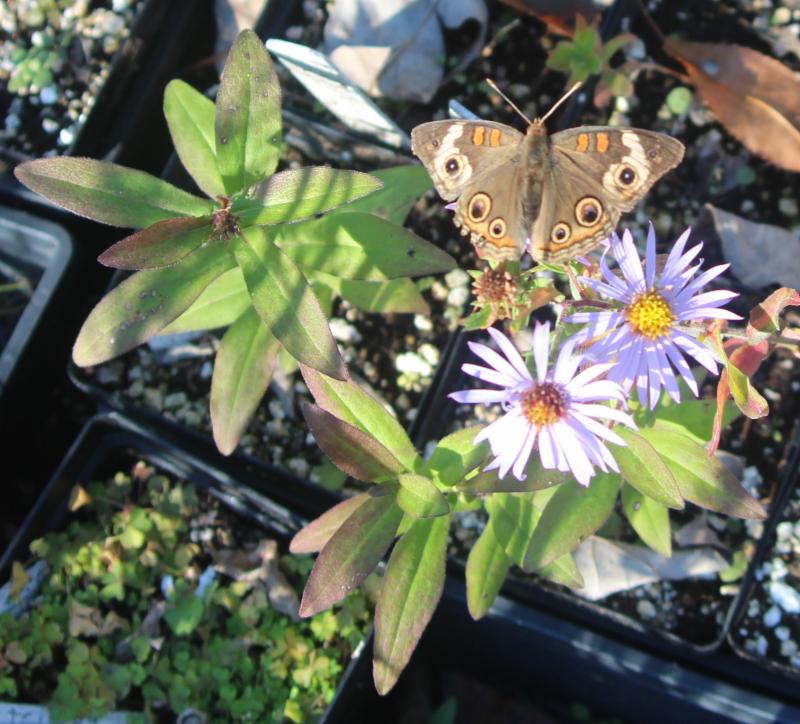
Buckeye Butterfly (Junonia coenia) seen just a few days ago here on Aromatic Asters (Symphyotrichum oblongifolium) at Toadshade!
|
|
|



